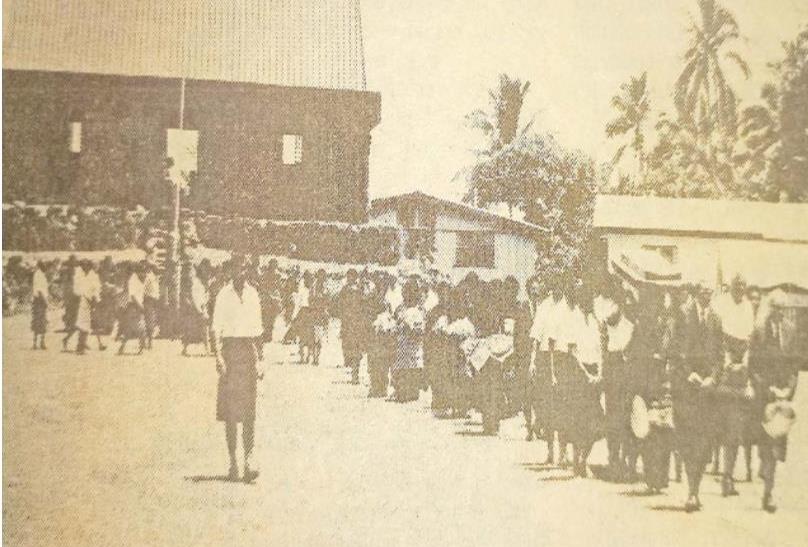The burial of Adi Litia Tavanavanua marked the end of an era of women of high birth on Bau, said a report in The Fiji Times on December 15, 1984, a day after her funeral.
Adi Litia, known to her people as Na Marama mai Naisogolaca, was buried with the solemn drone of drums echoing throughout the chiefly island.
The 84-year-old was a direct descendant of Ratu Seru Cakobau, and was the first person to be entombed in the chiefly mausoleum built in 1982.
She died at the Colonial War Memorial Hospital in Suva after a long illness.
Her body was taken to Bau on the Yaubula.
Adi Litia’s body lay in state in the chiefly bure, the Vatanitawake, while women in black maintained a 24-hour vigil or bikabika. More than 800 people, including local dignitaries were at the chiefly island for the funeral.
The Vunivalu of Bau, Ratu Sir George Cakobau, Governor General Ratu Sir Penaia Ganilau, Prime Minister Ratu Sir Kamisese Mara and Adi Lady Lala Mara led the funeral procession from the Vatanitawake to the church.
A high ranking woman from Burebasaga, Ro Maraia Mataitini, and Ratu Inoke Takiveikata, delivered the eulogies Born in September 1900, Adi Litia was the daughter of Ratu Penaia Kadavulevu, the son of Ratu Cakobau’s eldest son, Ratu Epeli Nailatikau.
She married Ratu Epeli Ganilau, and was stepmother to his children which included the Governor General, Ratu Sir Penaia Ganilau.
Ratu Inoke spoke on Adi Litia’s chiefly background and said she was the great-grand-daughter of Ratu Seru, who with other chiefs of Fiji, ceded the country to Queen Victoria in 1874.
He described Adi Litia as a kind and generous person, who showed love and affection to the people who served her.
Adi Tavanavanua had been president of the Soqosoqo Vakamarama for 10 years since 1967.
She was awarded an OBE by Queen Elizabeth during her visit to Fiji in October 1982.
The minister on Bau, Reverend Mosese Beranayarayara, also delivered a brief eulogy. At the end of the service her body was taken to the chiefly burial site, where the last rites were delivered.
Flowers were decked on the concrete platform, and the tomb was sealed after the casket was placed in it.



